A siding is a short spurs off of the main rail line that both allows other trains on the same line to pass, and provides temporary storage for rolling stock. Just a few sidings in a BRIO layout can add a great deal of visiual interest. They are easy to create using the standard track pieces that are common in BRIO starter sets, expansion sets, and individual track packs. Fairly intricate and elegant arrangements are possible without having to resort to exotic or retired track.
The basic siding is created with a combination of E, E1, and L or M:
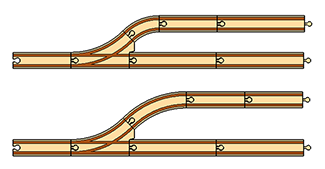
If you have O1 or P1 track, you have the following options:
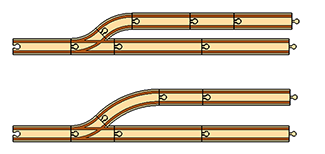
Note that the track spacing of the O1/P1-E configuration is the same as the L/M-E1 configuration. Use of O1/P1 and E1 makes for an even denser layout.
These configurations can be mixed and matched to build fairly intricate and complex track configurations, such as nested sidings and even branches that reconnect with the main line on the other end. One of the primary motivations for keeping sidings aligned with the main line is to allow for these double-ended connections.
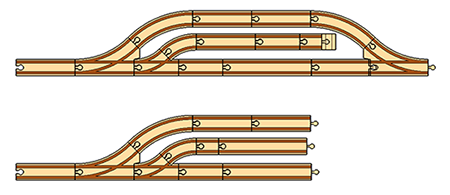
If you own some of the more exotic (and retired) switches, you get additional siding options:
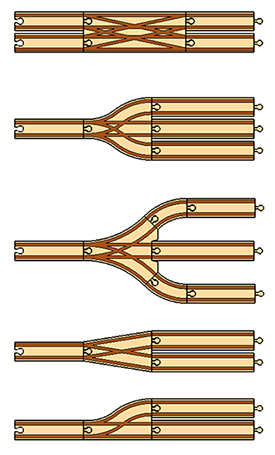
The advantage of the parallel and straight switches is that they enable the use of double track, and of course keep both the main line and the spur perfectly even with one another. The F1 and G1 switches, in particular, are a natural choice. I am not a huge fan of using the straight switches F and G by themselves, however, since they introduce an offset in the main line and force the train to navigate a switch.
Again, mixing and matching can greatly expand your layout options, and provide fairly dense track configurations.
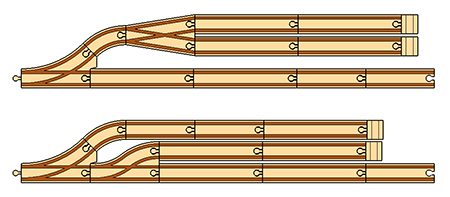
The best way to terminate a siding is with a buffer stop, though if you do not have enough buffer stops then a ramp track is cleaner than an open connector.
Later, I’ll discuss incorporating sidings between the basic loops, and then expand to building yards.